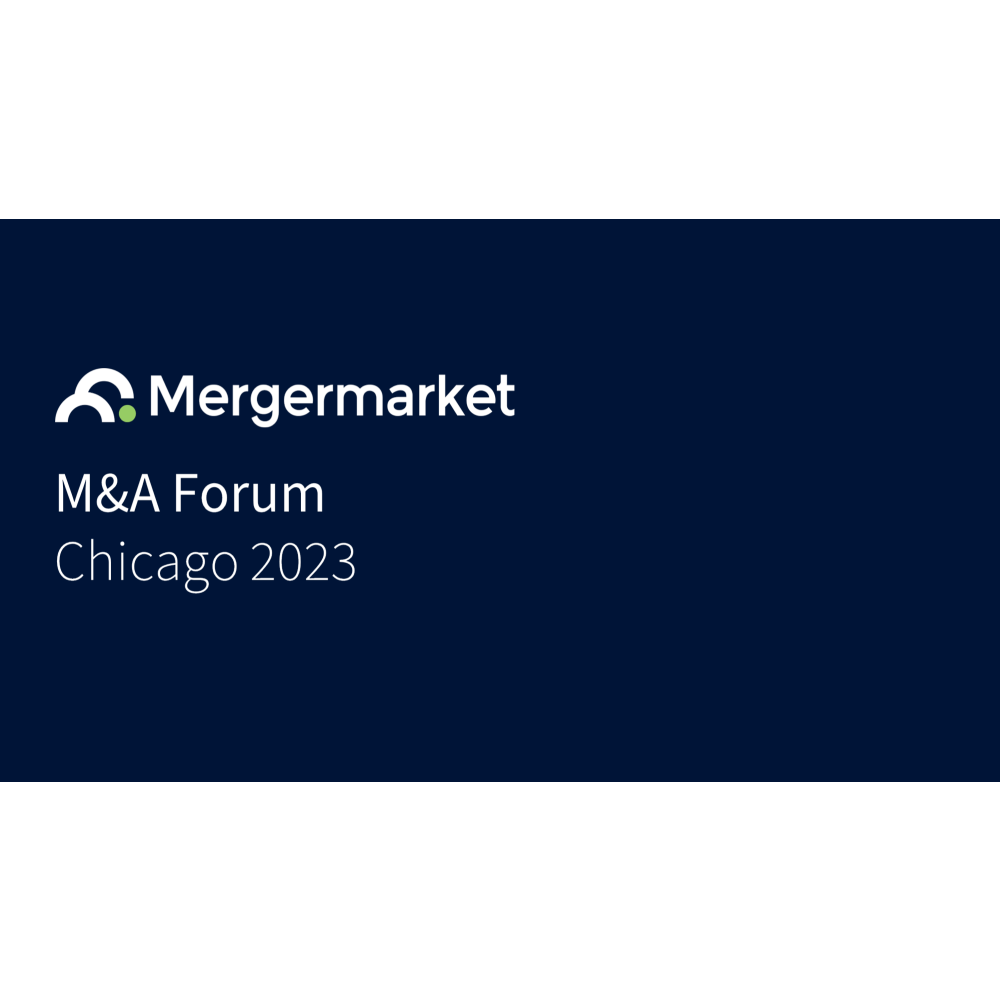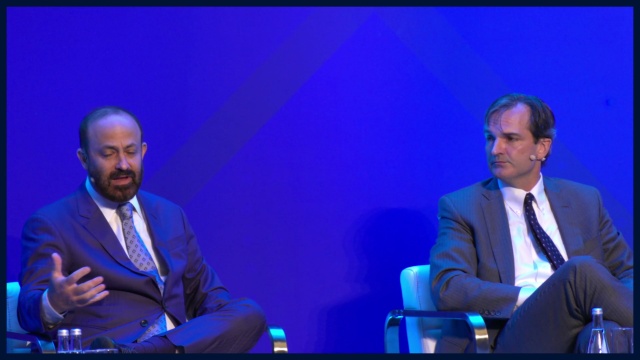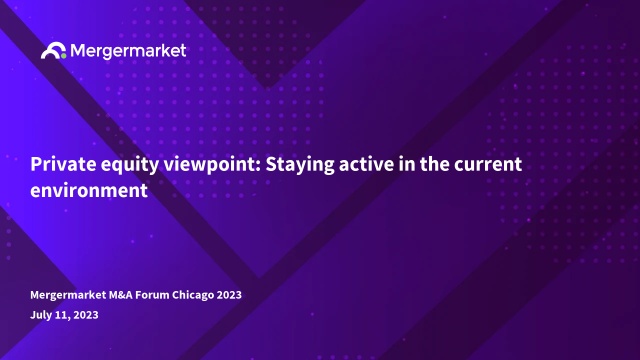M&A update: Dealmaking during times of uncertainty
According to Mergermarket data, US M&A was worth US$309.58 billion in Q3 2022 – a marked decrease from the previous two years. The recent slowdown in M&A activity and a rapidly changing global economic outlook is prompting dealmakers to take a thematic approach, whether through complimentary bolt-on acquisitions or buying a company to enhance their overall digitalization capabilities. Distressed opportunities may also be on the horizon and although availability of leverage is reduced, private equity dry powder levels are high. Indeed, because many strategics have strong balance-sheets, it will be interesting to see where deal flow is sourced, how transactions are restructured, and which parties are most active in the year ahead.
- How is the banking crisis and current sentiment in the capital markets shaping M&A?
- Will the changing macro environment halt the M&A market, and will we see more distressed opportunities?
- What are the current trends in North American M&A, and how has the opportunity set in the Midwest evolved?
- Which sectors are investors turning to for defensive acquisitions that can offer growth over the next five years?
Networking break
M&A drivers: The rise of activist investors
The number of shareholder activist campaigns in the US is on the rise, with companies anticipating that activism will continue to be a powerful lever for opportunistic shareholders seeking to extract value and deliver superior returns. A key focus for activist campaigns centers on corporate governance relating to ESG (especially environmental), and in the current troubled economic climate, activist campaigns may be launched against companies that are underperforming with depressed stock prices. We are likely to continue to see private equity players adopting a similar strategy to traditional shareholder activism as they come to the table with a value creation thesis, pushing for a change in management, a sale, or the breakup of the company. In this session, a panel of experts will look at the current activist landscape and the sectors that could attract attention in 2023 and beyond.
- What are the typical activist situations, and how are campaigns being structured?
- Are more activist firms adopting private equity-like approaches?
- How will ESG activist campaigners continue to assert themselves?
- What sectors are likely to be under the spotlight over the next 12 months, and how will this impact the M&A landscape?
Presentation: The long view of M&A – private equity vs corporate acquirors
If you are a corporate acquiror in 2023 then private equity is coming to eat your lunch - or to eat you. With M&A valuation multiples at 30-year highs, find out how competition between private equity and strategic acquirors for deals is driving a valuation frenzy, how private equity is gate-crashing strategic acquirors' growth plans, and how corporate acquirors are responding.
Lunch
Navigating cross-border M&A: Investing in a fragmented landscape
Monetary tightening and geopolitical tensions have investors reviewing their risk appetite for cross-border transactions, and stricter protections on foreign investment is expected to have a negative impact on dealmaking strategies, with Canada, UK and Australia becoming favored destinations. Experiences with the pandemic, global supply-chain issues, and the deglobalization trend means dealmakers must have conviction and place more emphasis on due diligence, compliance, and post-deal integration. Our panel of experienced investors outline the driving forces for cross-border activity and discuss the global challenges and hotspots.
- Which regions are seeing the most cross-border activity, and how and why has this changed?
- What are the leading target sectors for US acquirors – mining, computers and electronics?
- What are some of the regulatory issues that dealmakers need to be aware of, such as cybersecurity, political tensions, and ESG compliance?
- What specific geopolitical risks and supply-chain challenges can be mitigated through dealmaking?
Case study
The M&A landscape has become more challenging, requiring dealmakers to navigate a highly complex and multi-faceted risk environment. In this session, senior members of Aon’s M&A and Transaction Solutions practice will take us through a case study where a strategic buyer acquired a complementary business through a highly competitive auction. Due the competitive nature of the deal, the seller was not provided recourse for the inherent representations and warranties risks. In addition, the tax due diligence process uncovered several large tax exposures at the Target level leaving the buyer further exposed to a risk of more than $1.5 billion. In response to these risks, the acquirer was able to leverage insurance capital to secure their investment, cover the significant financial exposure the deal posed and move forward with the deal, thus turning risk into opportunity.
Networking break
Viable valuations: Finding the right price point
As buyers, sellers and lenders all wait for clarity on the macro-economic forces shaping the market outlook, uncertainty surrounding how deals should be priced will continue to act as a cap on activity. This is especially true for businesses whose revenues were impacted by COVID-19, either negatively or positively, as the buyer–seller expectation gap persists. The reluctance of regional banks to lend to large leveraged transactions could impact activity, however it may also open the door for private credit funds to fill the void and play a role in deal financing. Our panel of experts will discuss the current dynamics in play for dealmakers, as well as the valuation outlook for the next 12 months.
- Valuations and expectations – how have they changed over the last 12 months?
- What role are private credit providers playing in filling the financing gap left by regional banks?
- Is there a lack of standardization in valuation methodology?
- How is leverage availability effecting valuations in the large-cap deal space?
- Is the bid–ask spread starting to narrow to the point where transactions will progress?
Private equity viewpoint: Staying active in the current environment
According to a joint report conducted by Mergermarket and Debtwire, buyout activity amounted to 752 deals worth USD276.9 billion in the first nine months of 2022, down 25.6% compared to 2021. This can be attributed to the significant headwinds facing investors, including geopolitical unrest, inflationary pressure, and rising interest rates contributing to a highly uncertain investment environment. However, with funds sitting on substantial amounts of dry powder and corporate carve-outs still active, the outlook for the market is promising. For forward thinking funds that can selectively access opportunities and innovate via technology like AI for deal sourcing and due diligence the future is bright. Our panel of GPs share their views on the current state of the market and opportunities and challenges from investments to exits.
- What are the benefits of partnering with private equity in an M&A transaction?
- Which transaction sizes have GPs been focusing on?
- How is AI impacting the deal market today and in the future?
- What capital structure are GPs now using less leverage is available?
- What are the current portfolio priorities – labor shortages, ESG, de-risking supply chains, digitalization?
Confirm cancellation
An error occurred trying to play the stream. Please reload the page and try again.
CloseSign-up to join the ION Analytics Community to:
- Register for events
- Access market insights
- Download reports






 play_arrow
play_arrow





 play_arrow
play_arrow





 play_arrow
play_arrow

 play_arrow
play_arrow





 play_arrow
play_arrow


 play_arrow
play_arrow






 play_arrow
play_arrow





 play_arrow
play_arrow
 play_arrow
play_arrow


























